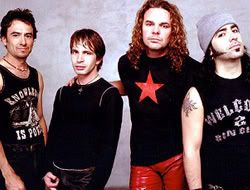With the Superbowl on the verge of invading Miami, advertisers have taken notice of the endless marketing possibilites. The Hispanic population is no exception. Coor's Light recently launched a bilingial marketing campaign realizing the growing popularity of NFL football among Latinos in the U.S. “Appealing to Latinos’ affinity for the NFL around the Super Bowl, the biggest football event of the year, allows Coors Light to bring an exciting brand experience to this consumer.", said Paul Mendieta, marketing director, U.S. Hispanic and Latin America, for Coors Brewing Company. ( source:
hispanicretail 360)
In this interview from The Hispanic PR Monitor, Anthony Ero's, president of Sports & Entertainment Marketing, Ero's reveals the growing population of Hispanic sports fans and sheds light on some common misconception the general public has about Hispanics and sports.
1)
What is the main focus of Latino Sports & Entertainment Marketing? In other words, what is the main purpose that you wish to accomplish with your clients?The main focus of Latino Sports & Entertainment Marketing, LLCTM (LSE) is to connect brands with the Latino consumer via sports and entertainment marketing platforms. We identify the relevant consumer segment and align two cultural passion points, sports and entertainment, to connect with that consumer.
Latinos have consistently demonstrated loyalty toward sports, music, movies and more, and brands can effectively utilize these channels to target their diverse Latino customer base. It is natural to utilize these strategically complementary cultural passions when designing and delivering programs for our clients.
2) What is the most common misconception the public has about Hispanics and sports?The most common misconception the public has about Hispanics and sports is that Hispanics only follow and participate in soccer or boxing. Granted, soccer is the number one sport in reaching the Spanish-dominant Hispanic, but there is potential for brands to reach different Hispanic target segments with various sports such as football, golf, basketball, baseball, etc.
Another common misconception is that (the Hispanic sports fan) can only be reached in Spanish. Hispanic sport fans are bi-lingual and very diverse in nature. Acculturation and language levels vary and Spanish may not be the most appropriate and relevant language to speak to a brand’s desired consumer segment. I have noticed brands purchase Spanish-language sports programming and believe they have successfully reached and impacted their consumer in a relevant way. Brands have to understand their consumer target may be reached by the mass, Spanish-language sports content, but they also need to be touched via personal relevance and interaction. Although mass reach is the norm, targeted and relevant consumer connection is the future.
3) What motivated you to open your own Sports marketing firm? Did you see a need for it in this industry?When I first started about 12 years ago, Fox Sports en Español, ESPN Deportes, GolTV, Republica Deportiva (Univision) and the many other Spanish-language sports networks and internet sites did not exist. Very few professional sports teams in the NBA, MLB and NFL had Hispanic outreach initiatives, which at best consisted of sporadic Spanish-language radio broadcasts. The MLS did not exist and international soccer friendly matches were unknown. Brands were relatively non-existent in activating sports to reach their Hispanic consumers. Hispanic fans were not addressed, were stereotyped and unseen by sports outreach campaigns – in fact there was NO value associated with the Latino market as viewed by sports marketers. And finally, Hispanics had very little opportunity to work as professionals in sports marketing industry because it was never presented as an option.
I started in the sports marketing industry as a consultant to the San Diego Chargers in 1994-1995. After successfully creating a profitable business model to reach Hispanics, I contacted every MLB, NFL and NBA team located in high Hispanic markets to learn how the Chargers’ efforts ranked. It was my expectation that of the more than 70 sports teams contacted, our efforts would rank low. To my surprise, the team ranked very high. This research and realization was educational and eye-opening, and launched my career.
4) Your company has a Latino Sports Marketing Internship program. What was the reasoning behind starting such a program and what does the program entail?According to surveys conducted, Caucasians account for 93 to 96 percent of the sports industry workforce while all other ethnicities account for the balance. As the Hispanic segment becomes more diverse and as sports business continues to diversify its efforts to reach an ever-growing Hispanic segment, I felt there was a need to contribute to the success of future Hispanic sports marketing executives.
The Latino Sports Marketing Internship Program (LSMIP) seeks to diversify the sports industry workforce, provide opportunities and prepare the Latino sports executives for tomorrow. The program’s goal is to complement the educational scholarships that exist for Latinos with “real world” working experience - opportunities that will better prepare them for success.
While the number of Latinos on the playing fields has increased, the same cannot be said about the number of Latinos working in the sports industry. Many cannot afford to work at the mainly non-paying sports internships positions, but more importantly, they do not have the contacts or support system that can inform them on these opportunities. The LSMIP provides the “foot in the door” and a stipend so future Hispanic sports business executives can get their start.
.
5) Can you list some of the clients you’ve had this past year?o Tecate
o Merrill Lynch
o Virgin Entertainment Group
6) Outside of your professional ties to sports-do you play or personally follow a particular sport?I truly enjoy golf, basketball, cycling, running and fitness in general. I am a fan of high school, collegiate and professional sports and ranges from traditional sports to lacrosse and the Tour de France. In general, I am pretty lucky that I can be at a sporting event while conducting business.
7) You are considered an entrepreneur and pioneer in the Hispanic sports marketing industry who has helped paved the way for many marketers. What personal and professional experiences have given you a unique perspective and foundation of knowledge about the Hispanic Sports and marketing niche?Surviving and overcoming failures gave me a unique perspective and foundation about business and life. Failure provides humility, while surviving and overcoming failure provides confidence and perspective.
I listen to people with common sense, because they are usually successful. The following three sayings were shared with me by a successful mentor:
• “Gotta skin it after you kill it”
In business it means the hard work starts after you secure a new client. Now you have to deliver on what you said you’d deliver.
• “I’d rather have ICAN than IQ”
In business it means activity/action/doing something pays off more than intelligence. The smartest guy in the world can be on a couch reading a book while an average guy is doing something to get ahead.
• “He may not always be right, but he’s never in doubt”
It means you have to be willing to be right and wrong. Too many people are afraid to have an opinion. In business, people make good salaries for providing facts while other people make millions for providing their opinions.
My parents were hard workers and took pride in the quality of work they produced while not complaining. They were both laborers and neither can tolerate people who talk too much and do too little. They earned reputations for being work horses and people could count on them. I admire and respect these qualities and strive to duplicate them in my own efforts.
8) What are some of the new trends that you are seeing in Hispanic Public Relations and in Hispanic Marketing?• Brands are beginning to realize that hiring a couple Hispanics and creating a division at a big agency is not as effective as specialized agencies. Hispanic ad agencies really don’t have the promotional and marketing expertise they need in order for well-rounded and integrated marketing plans to be implemented. In the case of sports marketing, general market sports marketing firms don’t understand the Latino component of marketing programs.
• Brands are allocating more dollars in reaching Hispanics via sports and not necessarily just soccer. There will be more money allocated toward baseball, basketball, football, etc. in an effort to reach Hispanics.
• Experiential marketing is more important because brands see the need to go into local Hispanic communities versus always asking them to go to professional sporting venues that are not likely in their neighborhoods.
• More PR tactics are created to generate publicity opportunities versus simple press releases, etc.
9) Coors light is targeting Hispanic’s through American Football by featuring bilingual ads during the upcoming SuperBowl games. Do you think this is a trend that will become increasingly popular within the sports industry and with marketers? Or is this only occurring because of the magnitude of this event?Definitely. More and more Hispanic consumers are bi-cultural and bi-lingual.
From The Hispanic PR Monitor part of Hispanic PR Wire Inc.
 was on the cover.
was on the cover.





























